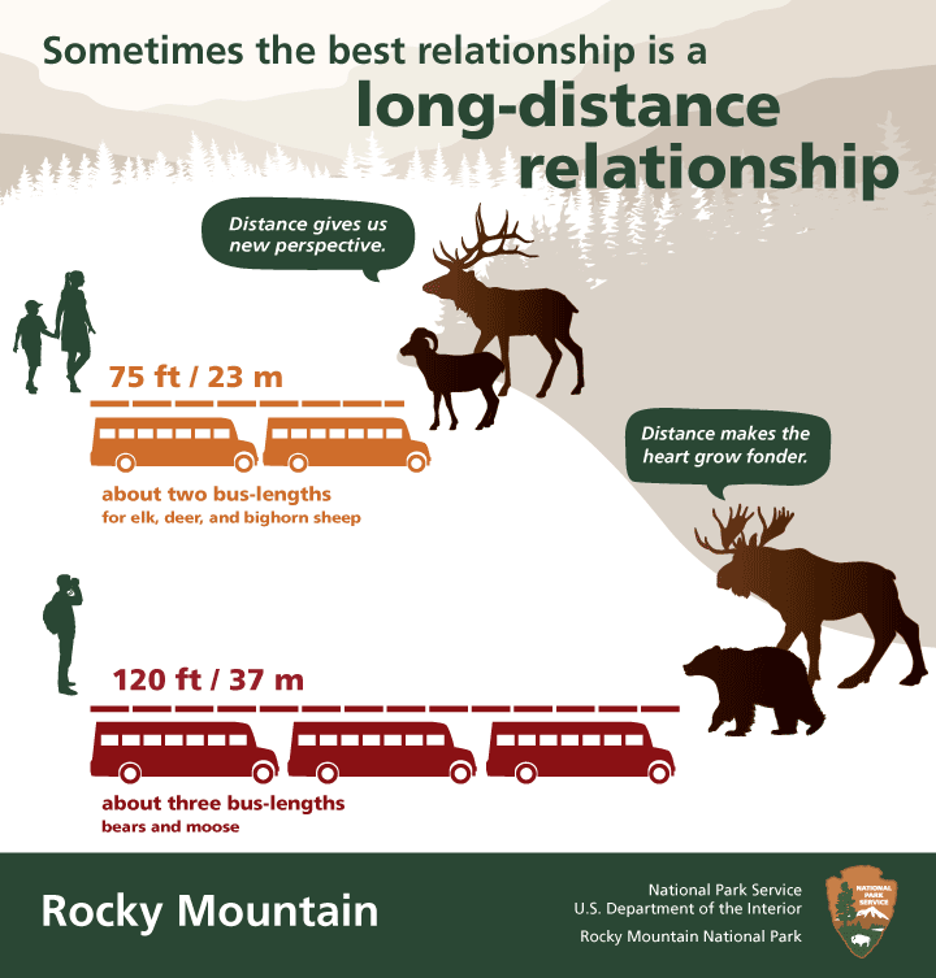From our friends at Rocky Mountain National Park.
Elk are a defining sight in Rocky Mountain National Park; one of the park’s major attractions. Learn more about these majestic creatures.
North American Elk (cervus canadensis) are one of the largest members of the deer family. Large males, called bulls, can weigh several hundred pounds and stand five feet at the shoulder. Females are called cows and are roughly half that size. A dark brown mane, light-brown bodies and white rumps characterize both sexes. They grow a thicker coat of hair each winter which they shed each spring.
Only males have antlers, which grow in the spring and drop each winter. Antlers can grow up to an inch a day. They are covered with a protective layer of velvety skin. When the antlers are fully grown, the bulls scrape this layer off.
Elk are highly social animals and travel in various herd sizes throughout the year. Herds can grow as large as a few hundred individuals. Elk have a large range and move according to seasonal food availability. In the summer, herds move to higher elevations to feed on tundra vegetation, while in the winter they move down to lower elevations of the park and down into the Front Range. Large herds consist of cows, calves and young bulls (spikes). Older bulls remain in smaller groups or are solitary until the fall breeding season.
Calving usually happens in tall grassy or brush areas away from the herd. Elk calves are born from late May into June and weigh about 30 pounds. Most cows give birth to one calf, but may also have two. Newborns have spots, which fade away by late summer. Calves can join the herd after two weeks and are weaned at two months old. Cows are extremely protective of their calves so use caution around elk at this time of year.
Elk primarily graze on grasses and forbs but they also browse shrubs. They feed mostly in the morning and evening, and seek sheltered areas during the middle of the day to digest. They eat an average of 20 pounds of vegetation daily. Free roaming elk have a lifespan of 10-13 years in the wild.
The Rut
The elk rut, often characterized by the elk bugle, is their mating season. During this time hundreds of elk (or more) may be seen at any one time in the park, the sounds of bull elk bugling adding to the spectacle.
The wild sights and sounds, understandably, draw visitors. Remember, these are wild animals participating in mating rituals, and hormones are raging! Find out more about the rut and listen to an elk's bugle.
Safe elk-viewing guidelines
Give all elk plenty of room. Stay back and use a zoom lens to photograph them, whether they’re mating, eating, or sleeping. People can get injured when they impose on elk’s space. If you cause an animal to pay attention to you or to move, you are too close. Always enjoy them from a distance. Remember your safety first! Check out these safe viewing and photography tips from Rocky Mountain National Park.





